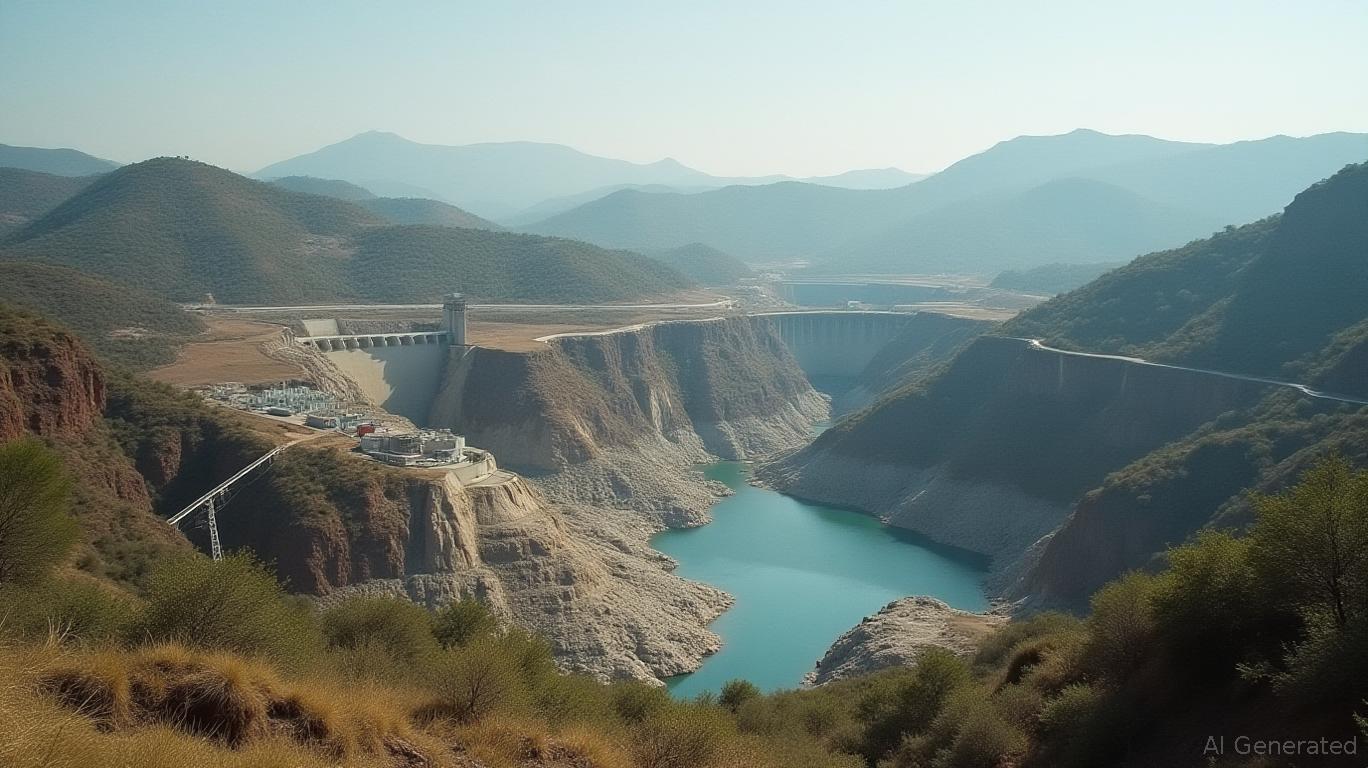Ethiopia Generates $55 Million from Bitcoin Mining with Excess Hydroelectric Power – AInvest

Ethiopia’s Innovative Use of Surplus Hydroelectric Power for Bitcoin Mining
Overview of the Initiative
Ethiopian Electric Power (EEP) has successfully generated $55 million in revenue over a period of 10 months by utilizing excess hydroelectric power for Bitcoin mining. This initiative involved redirecting surplus electricity from hydroelectric dams, which would otherwise be wasted due to limited transmission infrastructure, to power Bitcoin mining rigs.
Alignment with Sustainable Development Goals (SDGs)
- SDG 7 – Affordable and Clean Energy: Efficient use of surplus renewable energy enhances energy access and sustainability.
- SDG 8 – Decent Work and Economic Growth: The initiative created new revenue streams contributing to economic development.
- SDG 9 – Industry, Innovation, and Infrastructure: Reinvestment of profits into transmission infrastructure supports industrial growth and innovation.
- SDG 12 – Responsible Consumption and Production: The project maximizes resource efficiency by utilizing energy that would otherwise be wasted.
Strategic Importance and Economic Impact
- Addressing Energy Distribution Challenges: The project tackles the imbalance between hydroelectric power generation and limited distribution capacity.
- Monetization of Surplus Energy: By mining Bitcoin, EEP converted unused electricity into a valuable financial asset.
- Significant Revenue Contribution: The $55 million revenue accounted for approximately 18% of EEP’s total annual income.
Reinvestment and Long-Term Benefits
Profits from Bitcoin mining have been strategically reinvested into expanding and accelerating the construction of transmission lines. This reinvestment aims to:
- Enhance energy distribution capacity to households, businesses, and industries.
- Support sustainable economic development by improving energy access.
- Ensure long-term infrastructure improvements aligned with national development goals.
Replicability and Sustainable Innovation
The Ethiopian model demonstrates how surplus renewable energy can be leveraged to generate revenue and fund critical infrastructure development. This approach offers a replicable framework for other countries facing similar challenges, promoting:
- Efficient energy management.
- Economic growth through innovative use of resources.
- Advancement towards multiple SDGs by integrating technology and sustainability.

1. Sustainable Development Goals (SDGs) Addressed or Connected
- SDG 7: Affordable and Clean Energy
- The article discusses the use of excess hydroelectric power, a renewable energy source, to generate revenue and improve energy infrastructure.
- SDG 8: Decent Work and Economic Growth
- The initiative generated significant revenue ($55 million) and contributed to economic development by reinvesting profits into infrastructure.
- SDG 9: Industry, Innovation, and Infrastructure
- The reinvestment into transmission line construction and expansion supports infrastructure development and innovation in energy distribution.
- SDG 12: Responsible Consumption and Production
- Utilizing surplus energy that would otherwise be wasted aligns with efficient resource use and sustainable consumption.
2. Specific Targets Under Those SDGs
- SDG 7: Affordable and Clean Energy
- Target 7.2: Increase substantially the share of renewable energy in the global energy mix.
- Target 7.a: Enhance international cooperation to facilitate access to clean energy research and technology.
- Target 7.b: Expand infrastructure and upgrade technology for supplying modern and sustainable energy services.
- SDG 8: Decent Work and Economic Growth
- Target 8.2: Achieve higher levels of economic productivity through diversification, technological upgrading, and innovation.
- SDG 9: Industry, Innovation, and Infrastructure
- Target 9.1: Develop quality, reliable, sustainable, and resilient infrastructure.
- Target 9.5: Enhance scientific research and upgrade technological capabilities of industrial sectors.
- SDG 12: Responsible Consumption and Production
- Target 12.2: Achieve sustainable management and efficient use of natural resources.
3. Indicators Mentioned or Implied to Measure Progress
- Revenue Generated from Renewable Energy Use
- The article states $55 million revenue generated from Bitcoin mining using excess hydroelectric power, which can be an indicator of economic benefit from renewable energy utilization.
- Percentage of Total Revenue from Renewable Energy Initiatives
- Approximately 18% of EEP’s annual income came from this initiative, indicating the financial impact of renewable energy projects.
- Expansion of Energy Infrastructure
- Reinvestment into transmission line construction and expansion can be measured by kilometers of transmission lines built or upgraded.
- Utilization Rate of Surplus Energy
- Amount of surplus hydroelectric power redirected to productive use (e.g., Bitcoin mining) instead of being wasted.
4. Table of SDGs, Targets, and Indicators
| SDGs | Targets | Indicators |
|---|---|---|
| SDG 7: Affordable and Clean Energy |
|
|
| SDG 8: Decent Work and Economic Growth |
|
|
| SDG 9: Industry, Innovation, and Infrastructure |
|
|
| SDG 12: Responsible Consumption and Production |
|
|
Source: ainvest.com








